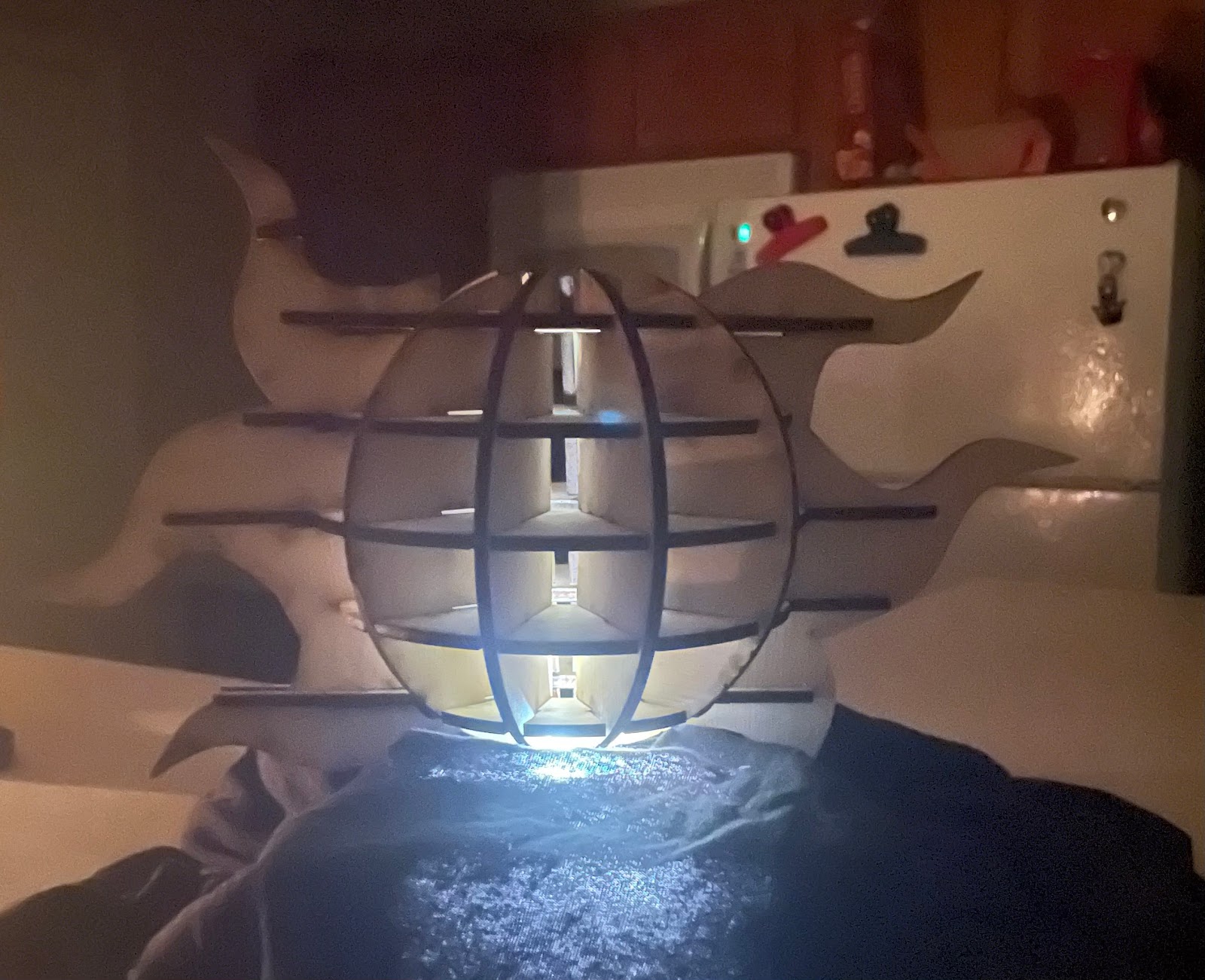Concept:
My
neighbors and their love for EDM DJ “Subtronics,” were the inspiration for this
project. We’ve become great friends (they even dog sit for me), they know about
the things I do here in ATEC, and have mentioned that it would be great if I
made them something with the Subtronics Cyclops logo (top right corner in pic).
Enter our lamp project and so I set out to design something that would
encompass their love for EDM and my appreciation for them.
Process:
I
started with some research and sketches to get some early layouts of the logo
and symbols for other things you might see at a concert. The Adobe Illustrator tutorial
videos got me thinking I could pull some stock vector art to turn into
engraving patterns and so I toyed with that and the tween curves techniques
while developing my design. I used Makercase to get the big panels cut before
bringing everything into Rhino for adjustments like trimming all the overlapping
lines so the laser wouldn’t make a mess of things at cut time. Some extrudes
got me the 3D model to render in Keyshot where I played with labels to simulate
the engraved areas.
Materials:
Aside
from the Sande Plywood, and other items off the shopping list, the only things I
added were some sketchbook paper to cover the Cyclops logo cutouts and some
Varathane wood stain in smoke gray. Combined with the burnt edges from the
laser cutting I should end up with a nice coloration that matches their home décor
and a soft diffuse light that should blend in with their own in-house laser
shows and mini raves





















































